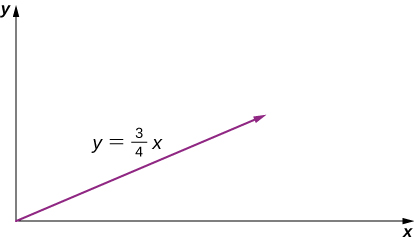| << Chapter < Page | Chapter >> Page > |
Inserting the initial position and velocity into [link] and [link] for x , we have
For y , we have
(b) Now that we have the equations of motion for x and y as functions of time, we can evaluate them at t = 10.0 s:
The position and velocity at t = 10.0 s are, finally,
The magnitude of the velocity of the skier at 10.0 s is 25 m/s, which is 60 mi/h.
With [link] through [link] we have completed the set of expressions for the position, velocity, and acceleration of an object moving in two or three dimensions. If the trajectories of the objects look something like the “Red Arrows” in the opening picture for the chapter, then the expressions for the position, velocity, and acceleration can be quite complicated. In the sections to follow we examine two special cases of motion in two and three dimensions by looking at projectile motion and circular motion.
At this University of Colorado Boulder website , you can explore the position velocity and acceleration of a ladybug with an interactive simulation that allows you to change these parameters.
If the position function of a particle is a linear function of time, what can be said about its acceleration?
If an object has a constant x -component of the velocity and suddenly experiences an acceleration in the y direction, does the x- component of its velocity change?
No, motions in perpendicular directions are independent.
If an object has a constant x- component of velocity and suddenly experiences an acceleration at an angle of in the x direction, does the x- component of velocity change?
The position of a particle is (a) Determine its velocity and acceleration as functions of time. (b) What are its velocity and acceleration at time t = 0?
A particle’s acceleration is At t = 0, its position and velocity are zero. (a) What are the particle’s position and velocity as functions of time? (b) Find the equation of the path of the particle. Draw the x- and y- axes and sketch the trajectory of the particle.
a.
,
b.

A boat leaves the dock at t = 0 and heads out into a lake with an acceleration of A strong wind is pushing the boat, giving it an additional velocity of (a) What is the velocity of the boat at t = 10 s? (b) What is the position of the boat at t = 10s? Draw a sketch of the boat’s trajectory and position at t = 10 s, showing the x- and y -axes.
The position of a particle for t >0 is given by (a) What is the velocity as a function of time? (b) What is the acceleration as a function of time? (c) What is the particle’s velocity at t = 2.0 s? (d) What is its speed at t = 1.0 s and t = 3.0 s? (e) What is the average velocity between t = 1.0 s and t = 2.0 s?
a.
,
b.
,
c.
,
d.
,
e.
The acceleration of a particle is a constant. At t = 0 the velocity of the particle is At t = 4 s the velocity is (a) What is the particle’s acceleration? (b) How do the position and velocity vary with time? Assume the particle is initially at the origin.
A particle has a position function where the arguments of the cosine and sine functions are in radians. (a) What is the velocity vector? (b) What is the acceleration vector?
a. , b.
A Lockheed Martin F-35 II Lighting jet takes off from an aircraft carrier with a runway length of 90 m and a takeoff speed 70 m/s at the end of the runway. Jets are catapulted into airspace from the deck of an aircraft carrier with two sources of propulsion: the jet propulsion and the catapult. At the point of leaving the deck of the aircraft carrier, the F-35’s acceleration decreases to a constant acceleration of at with respect to the horizontal. (a) What is the initial acceleration of the F-35 on the deck of the aircraft carrier to make it airborne? (b) Write the position and velocity of the F-35 in unit vector notation from the point it leaves the deck of the aircraft carrier. (c) At what altitude is the fighter 5.0 s after it leaves the deck of the aircraft carrier? (d) What is its velocity and speed at this time? (e) How far has it traveled horizontally?

Notification Switch
Would you like to follow the 'University physics volume 1' conversation and receive update notifications?